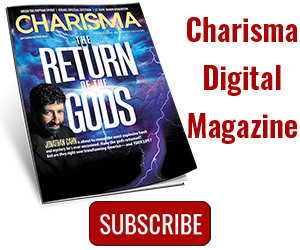
As a new Christian in the late 1970s I was naive and thought all Christians followed the teachings of the Bible and formulated doctrine and church polity objectively from the sacred Scriptures.
The more I study church history the more I realize the ways churches are structured, messages are preached, and theologies are formulated are often influenced more by their cultural environment than we care to admit!
Culture is responsible for how we process information, view life, express ourselves, govern ourselves, relate to other human beings, function in a church and, even how we view God. To try analyzing life outside of the constructs of our cultural influences is like trying to move a bus while sitting on it! Of course, that’s where we have to depend on the ministry of the Holy Spirit to teach us and guide us into all truth (John 14:26).
We see how hard it is to change ideologies affected by culture even in our modern secular society! For example, even when we went to war in Iraq after Sept. 11, 2001, and had as our primary goal to spread democracies throughout the Middle East, I was skeptical because the U.S. was trying to implement a Republican/Democratic form of government—something that took the U.S. more than 150 years to formulate, which came from the influence and intellect that arose from the preaching and teaching of the Protestant Reformers (primarily Puritans from England).
In Iraq we were attempting to build a nation with a people who had a vastly different worldview from a cultural context in the Middle East that framed their thinking from before the days of Moses! Even when democracy succeeds in that part of the world it may often result in having some of the same dictators and terrorists elected to lead, like when Hamas was elected democratically several years ago in the Palestinian Authority.
Regarding church history, there have been several different cultural eras which determined how the church functioned. They were largely based on culture and not only theology
The Hebraic Church (The Middle East)
The first-century church had a model in which things were more discursive, less systematic and more driven by a view of community, dialogue and spiritual parenting. Also, leaders developed primarily by informal mentoring between leaders and followers or disciples. This was a reflection of the Jewish culture in which the church was birthed.
We can see all of these dynamics by how Jesus chose His disciples and called them to be with Him before they would go forth to preach the gospel (Mark 3:13-14). This methodology for training leaders continued through the apostles (read 2 Timothy 2:2). They had more of a community dynamic in which there were daily teachings, prayers, and breaking of bread (Acts 2:42-47).
Furthermore, the theological emphasis of the church was based more on the Jewish roots of Jesus as the Messiah, based on the Old Testament prophecies of His first coming and culminating in His death, burial, resurrection and bodily return to judge the nations.
The Pauline epistles also further emphasized how His death and resurrection accomplished complete salvation to be applied through faith without following the ceremonial works of the Jewish law.
Hellenistic Church (The Eastern Empire)
After the destruction of the temple in A.D. 70 the Jews were scattered. It was from this point that the church began to separate from their Jewish culture and took upon itself a more Greek mode of being since that was the primary influence on Gentile culture.
In order to reach the unbelievers of the surrounding culture, many—like the first apologist Justin Martyr—wore the garments of Greek philosophers and began to combine Greek philosophy with Christian thought in order to make the gospel more appealing to the lost.
The apex of this cultural shift away from a Hebraic to a Greek culture was through the first major theologian of the church, a man named Origin who ministered from 202-254. He was the first theologian to formulate a massive systematic theological approach to Scripture when he wrote the First Principles and the Hexapla (a vast study of the six versions of the Old Testament).
Thus, the church went from a communal, informal method of discipling followers to a more individualistic, systematic mode of learning. The church also moved away from dialogue as a means of learning (read Luke 2:46-47) to utilizing gifted preachers who were trained and engaged in forms of rhetoric to deliver the word to disciples. This was reminiscent of the way Roman and Greek orators and philosophers were trained to deliver messages to influence large crowds. This was a more impersonal method but was adapted to reach those people who respected the wisdom and methodological approach of the Greek philosophers to convey truth.
The main interest of the church theologically went from the salvation history of the people of Israel and Jesus of Nazareth to the great salvific system. The church went from emphasizing the earthly Jewish roots of the Messiah to the Johannine cosmic Jesus, who was the Word of God before the earth was created. The emphasis went from Good Friday and Easter to Christmas and the pre-existent logos of God; the emphasis went from the resurrection to the incarnation, from the cross to cosmic Christ!
Also, the goal was to restore mankind to the image of God, which was emphasized more than justification by faith as Paul taught (compare Ephesians 2:8-9 with Ephesians 4:23-24 and Colossians 3:10).
The major Greek influence at the time was Plato. His philosophy was more idealistic and absolute in its approach to doctrine. Simple believers, they thought, could focus on the earthly, crucified Jesus but the theologically advanced were now to focus on the transcendent, cosmic Christ. They went from the earthly ascending Christ as the Son of God who was baptized, exalted and rose from the dead to the descending Christology which focused upon John 1 and portions of Philippians, Colossians and Hebrews, emphasizing His pre-existence and incarnation. They went from the Jewish emphasis of Jesus’ relationship with the Father and His election as the Son to the relationship between Father, Son and Holy Spirit.
Finally, the faith went from being explained through simple biblical language as found in Scripture, biblical narratives, and church hymns to it being explained with contemporary Greek concepts such as hypostasis, ousia, prosopon and Latin terms such as substantia and persona.
The Greek Orthodox Church still emphasizes this restoration to the image of God. This is why they utilize icons—images of the saints of old—which they have on their church walls and carry on their person as aids in prayer, inspiration, and faith as they venerate these ancient saints.
The Roman Latin Church
After Origin, the most influential church doctor (teacher) was Augustine (354-430) the bishop of Hippo, who, although he lived in North Africa, brought the emphasis of the church back to the Pauline epistles (justification by faith through the death, burial and resurrection of Christ).
But Augustine also advocated a strong hierarchical infrastructure of the church that many consider the genesis and backbone of the present Roman Catholic structure. Just the like the strong political rule of the Roman emperors starting with Constantine (who forced the Nicene Creed and Council of Nicaea, the second great ecumenical council, and the first since the one depicted in Acts 15; he also began to influence the church from a political point of view which melded together church and state), Augustine was influenced by Roman/Latin culture and its gift of administration. He believed in the power of the episcopate (church rule by bishops) which produced a hierarchical structure in the church reminiscent of the dominant culture of his time.
Theologically, Augustine brought the church back to emphasizing the epistles of Paul and the death, burial and resurrection of Christ as the focal point of preaching and teaching. He brought the church from that which was peripheral in the early church (the cosmic, pre-existent Christ) to the core essentials of the faith related to the life, death, resurrection and second bodily return of Jesus.
Medieval Times and Scholasticism
During Medieval times a revival of Aristotle (from the works of the Muslim philosopher Averroes and the Jewish philosopher Maimonides) was spreading skepticism, mostly from the University of Paris.
Thus, jumping ahead to Thomas Aquinas (1224-1274) we see a shift in the church to a more Aristotelian theology, with its emphasis on particulars and pragmatism rather than on abstract thought and idealism. To counter this emphasis on Aristotle that was spreading skepticism, Aquinas presented a synthesis of Aristotle and Scripture. Rather than merely refute everything Averroes, Maimonides and others wrote as they referenced Aristotle, Aquinas attempted to reconcile their teachings with Scripture in his still popular Summa Theologica (systematic summation of theological knowledge).
Aquinas didn’t merely want to translate or interpret Aristotle’s philosophy, he wanted to transform it! He knew that traditional Augustinianism, which previously governed everything, was now inadequate with the rediscovery of Aristotle. The church needed a rational explanation for faith that didn’t depend solely on the Bible, church tradition, church fathers and popes. They needed a faith that utilized the latest philosophical concepts for rational thought and analysis. Because of this Aquinas created a theological and philosophical synthesis. His motto was ‘I know in order to believe’ instead of Augustine’s ‘I believe in order to know.’ (The heart can’t trust what the mind rejects!)
This emphasis on Aristotle greatly affected culture. The shift went from the abstract idealistic (Plato) to the pragmatic in which Aquinas presented a view in which there are two kinds of truth: natural truth that can be discovered by studying and observing nature (natural law), and revealed truth that is based on the revelation of God that cannot be discovered through natural observation, e.g. the Scriptures. Aquinas’ view enables human reason to discover truth in an independent way (not dependent directly on God’s revelation) that covers a wide variety of truth including proving the existence of God, the existence of an eternal soul, God as creator, and the attributes of God as revealed by nature, which can be demonstrated by reason alone without divine revelation. Faith is necessary to believe the higher truths such as the incarnation, the Trinity, and salvation from sin.
This is the first time a Christian theologian taught that truth could be learned by a human being apart from God-given revelation. It was a seismic shift that opened up the door to great advances in science through independent study utilizing the rational mind. But it also led, centuries later, to modernity in which truth went from what works (the ethics of Aristotle) to empiricism (what is true is only that which can be proven through scientific methods).
Thus, the church responded to the rediscovery of Aristotle and adapted its theology to a scholastic approach in which truth had to be verified by numerous things corresponding scientifically to each other. This led to the Enlightenment and, as noted before, empirical science, which then led to rationalism and reductionism, which then led to higher criticism of the Bible in which even the authenticity of the authorship of Scripture was being questioned as well as the canonicity of many books of the Bible. Thus, liberal Protestant mainstream denominations are still stuck in this mode that was first introduced by culture. Unfortunately, we see that as all this evolved it was the church that harnessed the very ideology that has destroyed the faith of many denominations to this present day!
The Fundamentalists
The Fundamentalists were Bible-believing Christians who reacted to the secular threats to their faith in the early 20th century (the threats of humanism, higher criticism, evolution, Marxism, mass immigration of non-Protestant Europeans, and Freud’s teachings, to name a few). Fundamentalists reacted by isolating themselves from the world, science, and education, and espousing a Biblicist approach in which only the Bible was studied. Thus, they became Biblicists (those who only read the Bible and shun academia) similar to the ancient Gnostics who believed that only spiritual things were important and that the material world was something to be escaped from!
This tendency to escape culture opened up the door for hyper-dispensational, pre-millennial theology to dominate fundamentalist Bible institutes and colleges, resulting in the church focusing on waiting for the rapture, the anti-Christ, and preparing for heaven rather than engaging the culture and bringing Christ to culture. Thus, we went from the pre-Civil War Puritan emphasis of Christ over culture to Christ separate from culture. This has caused huge damage because the church no longer functioned as salt and light to the world, thus abandoning the world and giving it over to liberal humanists who took the lead in education, the arts, philosophy, science and politics. The non-engagement of the church is the reason why Marxist ideology rules in universities and in much of the far-left political landscape, and why we are presently fighting the legalization of same-sex marriage!
Postmodernism
Out of the shambles of modernism—with its dry, colorless, scientific approach to life—young people began searching for transcendent meaning beyond what can be observed by the physical senses. This resulted in postmodernism becoming the dominant metanarrative in academia and modern culture.
As a reaction to this, the Emergent Church movement has grown over the past few decades, in which absolute truth is shunned in favor of experiential, informal and discursive approaches to God and truth.
In conclusion, we see in this brief overview the power of culture in shaping both the theology and methodological approaches of the church. We see how the church went from a Hebraic approach to a Platonic, then Roman, then scholastic, then modern, and finally postmodern approach to church and Scripture.
Those of us who serve as leaders in the church must do our best to be self-aware and rise above culture by studying how culture affects us, by studying the culture and interpretive thought of the original authors of Scripture, and most importantly by depending on the ministry of the Holy Spirit to rescue us from blindly following mainstream cultural thought, so we can think God’s thoughts after Him as His image-bearers, proclaim the truth of Scripture, and function as His body in a manner that will bring glory to Him and please Him!
Joseph Mattera has been in full-time ministry since 1980 and is currently the presiding bishop of Christ Covenant Coalition and Overseeing Bishop of Resurrection Church in New York, a multiethnic congregation of 40 nationalities that has successfully developed numerous leaders and holistic ministry in the New York region and beyond. Click here to visit his website.
To contact us or to submit an article, click here.
Get Charisma's best content delivered right to your inbox! Never miss a big news story again. Click here to subscribe to the Charisma News newsletter.






